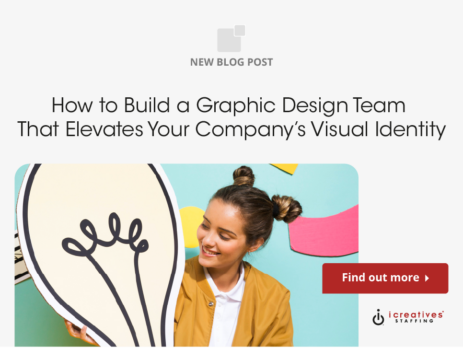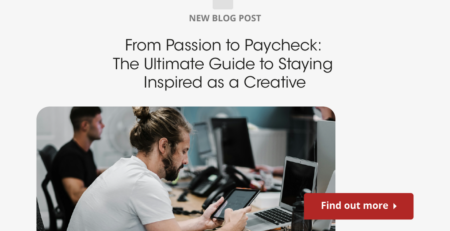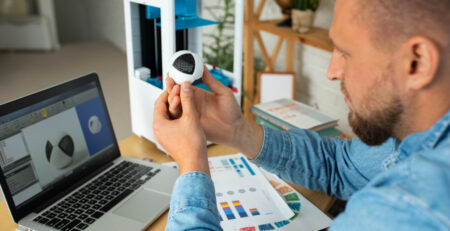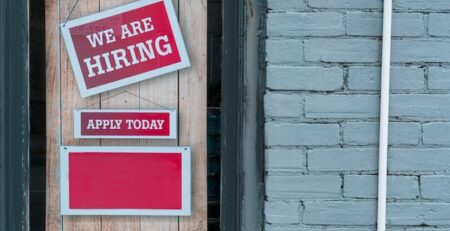How to Build a Graphic Design Team That Elevates Your Company’s Visual Identity
Building a graphic design team that truly elevates your company’s visual identity involves more than just hiring talented individuals; it requires strategic planning, understanding the nuances of brand representation, and fostering a collaborative environment. A well-constructed team can transform your company’s visual communication, ensuring it aligns with business goals and resonates with your target audience. This guide explores the essential steps and considerations for assembling a graphic design team that not only meets but exceeds expectations.
The first step in building an effective team is to define your company’s visual identity goals clearly. What message do you want your brand to convey? Who is your target audience? Answering these questions will help you determine the skills and experiences needed in your team. Next, consider the structure of your team. Will you benefit from a mix of in-house designers and freelancers? This hybrid approach can offer flexibility and a fresh perspective.
Recruitment is another critical aspect. It’s not just about finding candidates with the right skills but also those who fit well with your company culture and share your vision for the brand. Utilizing various recruitment tools and platforms can widen your search and help you find top talent. Once your team is in place, focus on fostering a creative and collaborative environment. Encourage open communication, regular feedback, and continuous learning to keep your team motivated and innovative.
Moreover, integrating your graphic design team with other departments such as marketing, sales, and product development can enhance the coherence and impact of your visual identity across all channels. This cross-functional collaboration ensures that your design team fully understands the broader business objectives and can tailor their creative strategies accordingly.
Finally, continuous evaluation and adaptation of your team’s strategies and processes will help you stay ahead of industry trends and maintain a dynamic and effective team. By investing in the right people and practices, your graphic design team will become a pivotal part of your company’s success, driving brand recognition and customer engagement through powerful visual storytelling.
What are the key roles and skills needed in a graphic design team?
How do you effectively manage and lead a graphic design team?
What are the benefits of having a dedicated graphic design team?
How can you foster creativity and innovation within your graphic design team?
What tools and technologies are essential for a modern graphic design team?
What are the key roles and skills needed in a graphic design team?
Building a robust graphic design team requires a clear understanding of the various roles and essential skills that contribute to successful design outcomes. The core roles typically include a Creative Director, Graphic Designers, UI/UX Designers, and potentially specialists like Illustrators or Animators.
Creative Director: Acts as the visionary leader who sets the overall creative tone and direction. They should possess strong leadership skills, creative vision, and the ability to think strategically about design and branding.
Graphic Designers: These are the individuals who develop the visual concepts and deliverables. Key skills include proficiency in design software like Adobe Creative Suite, a strong sense of aesthetics, and the ability to translate brand objectives into compelling visual stories.
UI/UX Designers: Specialize in designing interactive experiences and interfaces. They should have skills in prototyping tools, an understanding of user behavior, and the ability to design intuitive user interfaces.
Illustrators/Animators: Depending on the company’s needs, these roles can be crucial for creating unique visual elements that enhance storytelling and brand identity.
Additionally, soft skills such as communication, teamwork, and problem-solving are vital across all these roles. Each member needs to collaborate effectively with others, both within and outside the design team, to ensure that the final products align with business goals and user expectations.
It’s also beneficial to have team members who are adaptable and continuously seek to stay updated with the latest design trends and technologies. This not only keeps your team competitive but also fosters a culture of learning and innovation.
When assembling your team, consider how each role and skill set complements the others. This synergy not only enhances productivity but also ensures a more cohesive and dynamic approach to your company’s graphic design needs.
For further insights on building a professional profile in graphic design, consider exploring Top Secrets to Kickstart Your Professional Profile and Land Dream Projects in Graphic Design which offers valuable tips and strategies.

How do you effectively manage and lead a graphic design team?
Effective management of a graphic design team is crucial for fostering creativity, ensuring productivity, and achieving outstanding design outcomes. Leadership in a creative environment should be about inspiring and facilitating rather than controlling.
Start by setting clear expectations and goals. It’s important that every team member understands what is expected of them and how their work contributes to the broader company objectives. This clarity helps in aligning individual efforts with the team’s goals.
Communication is key. Regular meetings and updates will not only keep everyone on the same page but also encourage the sharing of ideas and feedback. This open line of communication fosters a collaborative environment where creativity can flourish.
Recognize and nurture individual strengths. Each designer will have unique skills and perspectives. Effective leaders identify and cultivate these strengths, which can lead to more innovative and diverse design solutions.
Encourage professional development. Investing in your team’s growth not only motivates them but also keeps your designs fresh and competitive. Whether through workshops, courses, or conferences, continuous learning should be a priority.
Implement a feedback system. Constructive feedback is vital for improvement and growth. Ensure that feedback is timely, specific, and delivered in a manner that encourages rather than discourages.
Be mindful of workload. Creative work can be incredibly demanding. Effective managers keep an eye on the workloads of their team members to prevent burnout and promote a healthy work-life balance.
Utilize the right tools. From project management software to design tools, having the right technology in place can streamline workflows and enhance creativity. Tools like Adobe Creative Cloud, Sketch, and InVision can be invaluable.
Lead by example. Leaders in creative fields should also showcase their creativity and commitment to quality. This not only sets a high standard but also inspires your team to strive for the same.
For more detailed strategies on managing creative teams, consider reading How to Attract and Retain Top Animation Talent in Your Team! on attracting and retaining top talent in creative fields.

What are the benefits of having a dedicated graphic design team?
Having a dedicated graphic design team offers numerous benefits that can significantly impact your company’s branding and overall success. These benefits extend beyond just having professionally designed materials.
Consistency in Branding: A dedicated team ensures that all your visual content is consistent with your brand’s identity. This consistency builds brand recognition and trust with your customers, which is crucial for long-term success.
Improved Quality and Innovation: With a team solely focused on your company’s design needs, you can expect a higher level of quality and creativity in your visual outputs. Graphic designers will have the time and resources to refine their ideas and produce innovative designs.
Faster Turnaround Times: When you have an in-house team, the communication and revision processes are much quicker compared to working with external agencies or freelancers. This can be crucial when you need to meet tight deadlines.
Better Alignment with Company Goals: An internal team will be deeply integrated with your company’s objectives. This alignment ensures that all designs effectively communicate your brand’s message and meet strategic goals.
Cost-Effectiveness: Over time, maintaining an in-house team can be more cost-effective than continually outsourcing projects. While the initial investment might be higher, the ongoing costs can be controlled and often reduced due to the elimination of high agency fees.
Enhanced Collaboration: A dedicated team facilitates better collaboration between designers and other departments. This can lead to more holistic and effective campaigns that are well integrated across all marketing channels.
Adaptability: In-house teams can quickly adapt to changes in marketing strategies or design trends. This flexibility is often necessary in dynamic markets and industries.
Employee Development: Having a dedicated team allows for more focused professional development in the specific areas that benefit your company the most. This investment in your team can lead to higher job satisfaction and lower turnover.
For additional insights into the advantages of remote collaboration in design teams, you might find Discover the Benefits of Hiring Remote Illustrators: Boost Your Brand’s Image! useful.
How can you foster creativity and innovation within your graphic design team?
Fostering creativity and innovation within a graphic design team is essential for producing original and effective visual content. Here are several strategies to help cultivate an environment that encourages creative thinking and innovation.
Encourage Risk-Taking: Allow your team the freedom to experiment and take risks with their designs. This can lead to unique solutions and breakthroughs in creativity.
Provide Inspirational Resources: Whether it’s books, magazines, or access to design conferences, providing resources that inspire and inform can spark new ideas and approaches.
Create a Collaborative Environment: Encourage teamwork and collaboration among your designers. Often, a collaborative approach can lead to better ideas and solutions than working in isolation.
Set Aside Time for Creative Exploration: Dedicate time for your team to explore new ideas without the pressure of deadlines. This can be through workshops, team brainstorming sessions, or personal project time.
Offer Constructive Feedback: Feedback should be a tool for growth and improvement. Ensure that it is given in a constructive manner that encourages designers to improve and innovate.
Celebrate Creativity and Success: Recognize and celebrate creative achievements within your team. This not only boosts morale but also motivates others to strive for excellence.
Introduce Diverse Projects: Work on a variety of projects that challenge your team’s skills and push them out of their comfort zones. This diversity can prevent creative stagnation and promote continuous learning.
Leverage Technology: Utilize the latest tools and technologies that can enhance creative processes. Tools like virtual reality or AI-driven design software can open up new creative possibilities.
Encourage Personal Development: Support your team members in pursuing their creative interests even outside of work. This can lead to a broader range of skills and ideas being brought into the workplace.
For more on enhancing your marketing strategies with creative teams, check out Transform Your Marketing with Freelance Creatives: A Step-by-Step Guide.
What tools and technologies are essential for a modern graphic design team?
The right tools and technologies are crucial for a modern graphic design team to function efficiently and produce high-quality work. Here’s a list of essential tools that every graphic design team should consider integrating into their workflow.
Adobe Creative Suite: This suite, including Photoshop, Illustrator, and InDesign, is fundamental for any graphic designer. It offers comprehensive features that cater to almost any design need.
Sketch: Popular among UI/UX designers, Sketch is a vector-based design tool known for its simplicity and efficiency in designing interfaces.
Figma: Figma is a cloud-based design tool that is excellent for collaborative projects. It allows multiple team members to work on a design simultaneously.
InVision: This tool is used for prototyping and can help designers visualize how a design works before it is fully developed.
Canva: For quicker, template-based designs, Canva is a user-friendly option that can be especially useful for social media posts and other web graphics.
Adobe XD: Another tool for UI/UX design, Adobe XD supports wireframing and prototyping, providing a smooth workflow for designers.
CorelDraw: Known for its powerful vector graphic design capabilities, CorelDraw is another staple tool for graphic designers.
Affinity Designer: A cost-effective alternative to Adobe Illustrator, this tool offers powerful vector and raster design capabilities.
Procreate: For illustrators, Procreate on the iPad is becoming increasingly popular for its natural drawing experience and extensive brush library.
Project Management Tools: Tools like Asana, Trello, or Monday.com are essential for managing projects, tracking progress, and maintaining deadlines.
Understanding and utilizing these tools can significantly enhance the productivity and creativity of a graphic design team. For more insights into UX/UI tools, consider this detailed overview of top UX/UI design tools.
Conclusion
Building and managing a graphic design team is a dynamic and ongoing process that requires attention to detail, strategic planning, and a deep understanding of your brand’s needs. The right team can elevate your company’s visual identity and ensure that your brand communicates effectively with its audience.
From hiring the right mix of talents and fostering a creative environment to integrating the latest design tools and technologies, each step is crucial in shaping a successful design team. It’s also important to keep evolving with the industry, embracing new trends, and continuously seeking improvement.
Remember, the ultimate goal is to create a team that not only produces aesthetically pleasing designs but also aligns closely with your company’s strategic objectives. This alignment between design and business goals is what will truly set your brand apart in a competitive market.
As you move forward, consider the insights and strategies discussed in this guide. Whether it’s refining your recruitment process, enhancing team collaboration, or upgrading your technological tools, each element plays a significant role in the success of your graphic design team.
Lastly, never underestimate the power of a well-coordinated team. With the right people and processes in place, your graphic design team will not only inspire but also drive tangible results for your business.
In today’s competitive market, finding the right creative and marketing expert can be a challenge. But with icreatives, you’re in experienced hands. With 37 years in staffing and a track record of matching more than 10,000 employees to over 1,000 companies worldwide, we know how to connect you with the best. Plus, you only pay if you hire—there’s no risk, only results. Ready to find your perfect creative or marketing expert? HIRE WITH ICREATIVES today!












